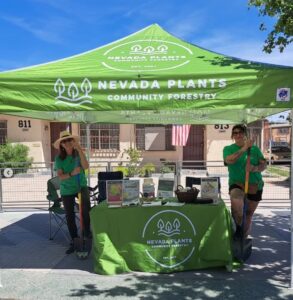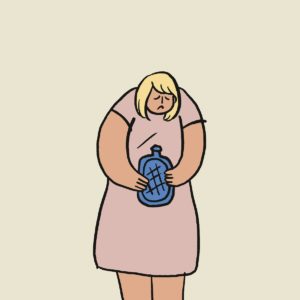
The Outdoor Recreation Economy in Nevada
Get Outdoors Nevada, in partnership with BBC Research & Consulting, published a report on February 16, 2021, outlining the impacts of COVID-19 on Nevada’s outdoor recreation economy (ORE). Per their website, BBC prepares market, policy, and economic research reports on behalf of public and private clients.
Nationally speaking, outdoor recreation accounts for one of the country’s largest economic sectors. It employs more than 5.1 million people, generates $226 billion in income, and nearly $460 billion in added value per year, [pg. I-1, 2].
Here in Nevada, it’s one of the fastest-growing economic sectors, touching every part of the state.
Economic Drivers
Our state’s landscapes, public lands, and other outdoor amenities attract people from all over the world.
As a major economic driver in Nevada, outdoor recreation offers a diverse range of opportunities for business, job creation, and community growth and engagement. There is also a broad range of industries present within those opportunities ranging from art, entertainment, and food to lodging, transportation, retail trade, and recreation itself, [pg. I-1, 3].
Together with the local government, these industries account for the most productive sectors of the outdoor recreation economy, related to economic output, and account for ~81% of that annually, along with 88% of its employment.
Outdoor recreation not only creates employment and income for Nevada workers, but it also generates tax revenue for both state and local governments, as well as diversifying the state’s tourist base, [pg. I-3].
According to the report, nearly 60% of Nevadans participate in outdoor recreation at least once a year, and more than 14 million people visited national parks, national recreation areas, and state parks in Nevada in 2019.
It goes on to say that the Bureau of Economic Analysis (BEA) statistics for 2020 indicate that outdoor recreation in Nevada, directly and indirectly, supports almost 60 thousand jobs in the state. This accounts for 3.1% of the entire labor force and for more than $5.5 billion per year in statewide economic activity, or 3.1% of NV’s revenue, [pg. I-1].
Composition and Output of the ORE
In 2019, the estimated added value per worker in our recreation economy was $91,852.
Warehousing and transportation added the most value here, including businesses that transport passengers and cargo, provide sightseeing transportation, and supporting activities. This industry alone generated approximately $1.3 billion in added economic value in the state of Nevada in 2019, according to the report.
This is seconded by retail trade, accounting for more than $1.1 billion in value in 2019.
Broken down, the retail industry for outdoor recreation includes a variety of businesses that sell recreational merchandise, apparel, and equipment, as well as “clothing stores, boat retailers, off-highway vehicle sales, gas stations, and convenience stores, [pg. I-3, 4].
In third, the accommodations and food industry generated $928 million of output, including RV sites and campgrounds, bars and restaurants, and motels and hotels. This industry is followed by the arts, entertainment, and recreation industry producing $628 million across the board from “sports teams, concerts, zoos, and botanical gardens, nature parks, amusement parks, golf courses, skiing areas, and marinas, [pg. I-4].
With almost $400 million of additional value, local governments make up another significant part of the economy, including “legal, police, fire, public health, environmental quality, and administrative services.” Per the report, local governments often “co-manage gateway communities near public land, play an important role for outdoor recreation businesses by stewarding public land and ensuring safe access to it,” [pg. I-4].
Employment
Regarding employment, the outdoor business economy in Nevada supports approximately 59,500 jobs.
In 2019, more than 17,800 of those jobs were in the retail trade, followed by accommodations and food service employing more than 14,400 people. This was followed by the arts, entertainment, and recreation industries with about 11,3000 employees. The transportation industry and local governments in the state also created 5,000 and 3,700 jobs, respectively. [Pg. I-4]
Altogether, the report states that these industries accounted for more than 88% of the almost 60,000 jobs in Nevada’s outdoor recreation economy in 2019. (Approx. 3.1% of all jobs in NV, BEA, 2020).
Earnings
According to the report, people employed in ORE jobs earned $2.6 billion in 2019, compared to the state’s $226 billion of total wages and salaries for the year. Retail trade accounted for the majority of this, with $598 million earned in the industry, followed by transportations workers with $550 million. Subsequently, accommodation and food service workers earned a collective $482 million, entertainment and recreation workers earned $318 million, and local government workers earned $256 million. [Pg. I-5].
The report added that these wages “do not correspond to high individual wages and salaries.” For instance, individual workers in retail earned an average of little more than $33,000 a year despite being in the industry with the highest total income earned. In contrast, transportation employees earned an average of $110,000 per year.
Output By Activity

When it comes to the output per the activity, local trips, or “travel that occurs less than 50 miles from home,” provided the largest source of added value, contributing approximately $249 million a year. This, followed by guided tours and outfitted travel with $234 million.
Activities like boating and fishing, festivals and sporting events, construction, golfing, and RVing each account for ~$275 million in value, [pg. I-6]
The Importance of Outdoor Activities
According to the report, while other activities like biking, hiking, and camping are popular in the state, their monetary value added is lower because those activities don’t cost as much as more expensive ones, like a helicopter tour of the Grand Canyon. However, these activities are engaged in more often, meaning their contribution to a person’s quality of life is more important than the activities that are engaged in less frequently but bring in more revenue to the state.
“This underscores the importance of promoting and ensuring access to the outdoors as a means of protecting and enhancing the value of simple outdoor activities that add value to people’s daily lives,” the report states, [pg. I-7].
With such a significant impact on the state’s economy and the wellbeing of both Nevada residents and our visitors, outdoor recreation is a resource to invest in and foster growth for future generations to benefit from.



